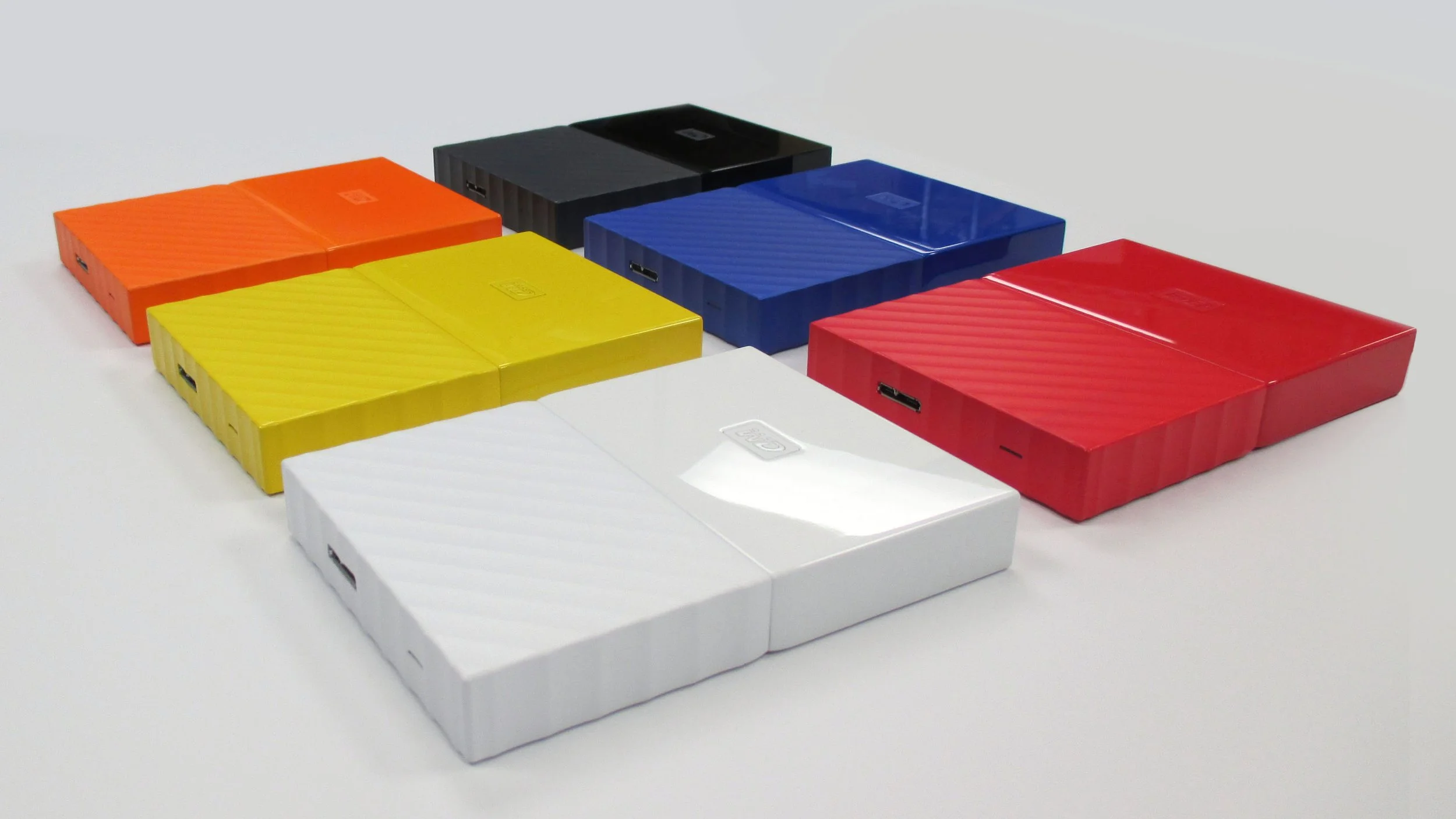Beginning in 2014, the WD ID team developed a transformative new design language in collaboration with Fuseproject. This new design language would be deployed across a number of desktop and portable products over the course of two years beginning with our highest volume My Passport products.
As lead designer for portable products, I was responsible for the design and execution of several variants – this included extensive CMF development and the development of several different product architectures.
The Lumen design language was conceived around a center waistline with two contrasting monolithic halves. The base was intended as a beautiful, textured foundation while the top expresses a clean and minimal surface. In the original design language, the center line was intended to accommodate an integrated light as a ‘lifeline’ representing the intersection between physical and digital worlds. This addition was unfeasible for portable products for numerous reasons.
The mass market My Passport was prioritized initially. In order to execute quickly the team opted to maintain the previous generation’s bucket/cover architecture for reliability. This was inherently at odds with the design language’s split at the waist of the product. In order to overcome this challenge, a single color strategy that emphasized the split halves through texture and pattern was adopted.
PC was selected over ABS in order to provider greater strength, scratch resistance and depth of color. In addition to exploring different textures, variations on form, pattern and proportion, I was responsible for extensive CMF work through production, including extensive work with suppliers onsite through mass production.
I also spent extensive time with tooling and molding houses to troubleshoot cosmetics due to demanding surface quality standards, technical challenge in executing the patterned half, zero draft design, variability with the different resin colors, and the need for part interchangeability produced by different suppliers.
As a follow up premium version of the My Passport, the Ultra variant was developed next. With a longer development runway, our engineering team developed a shock absorption system that would allow us to execute the design with a dual endcap design – allowing the execution of a dramatic split CMF.
Executing the lower half of the design in metal was also a challenge. In order to execute this, I worked extensively to scout suppliers and trial different approaches including stamped / formed, diecast, extrusion with secondary processes etc.
A similar design approach was adopted for the follow on My Passport SSD (left).
Ultimately a plating process was selected due to cost challenges with realizing the pattern in actual metal. I opted for an electroplating process to preserve the feel of metal (not present in vacuum metalized options) and worked with our supplier to develop three matte finishes including a novel nickel based ‘champagne’ gold.
The Lumen design language pushed a number of barriers – it was technically challenging and aesthetically disruptive but proved to be polarizing. In addition, some elements of the initial design vision were developed with little consideration for execution – driving additional product size and and working against user needs. This critical look at the design inspired its evolution into the current second generation version.








